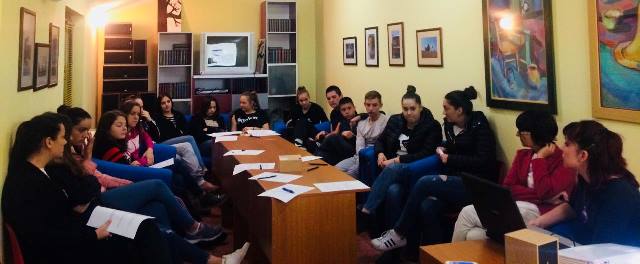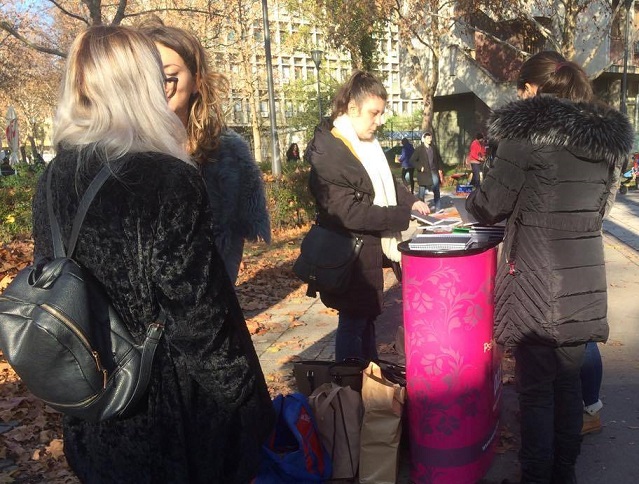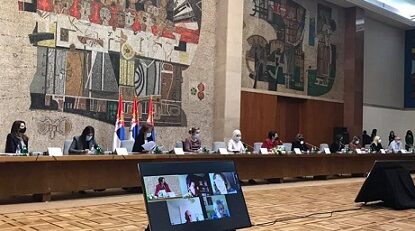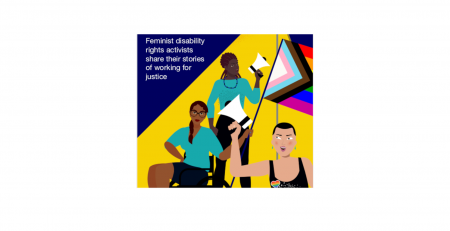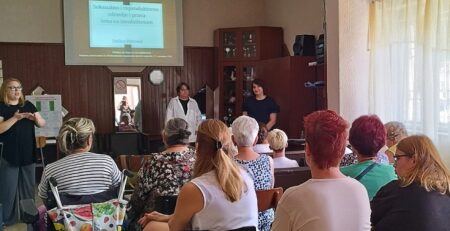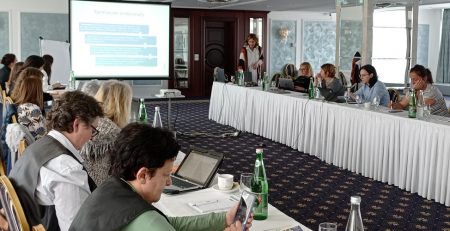Ivana Zelić from … IZ KRUGA – VOJVODINA and Ivana Perić from the SOS Women’s Center held a workshop entitled Girls and Women Protected from Sexual Harassment in the Brankovo Kolo High School Students’ Dorm on 25 October 2018. The workshop was a part of the Protected campaign, implemented as one of the preventative activities of the Zero Tolerance to Gender-Based Violence Project.
The aim of the workshop was to teach young women and men to recognize various forms of sexual harassment, to introduce them to the extent iof its incidence both in Serbia and other countries, as well as to share information on the ways they can protect themselves from it.
Sexual harassment is one of the most common forms of sexual violence and it is considered the easiest to tolerate. It implies various forms of unwelcome behavior on behalf of the perpetrator that does not necessarily include physical contact, but it nevertheless causes feelings of discomfort, embarrassment and humiliation with the targeted person. Any sexual behavior making another person feel bad due to being exposed to or targeted by it is considered sexual harassment, be it just a casual comment with a sexual connotation or an action including physical contact.
According to the data of the Autonomous Women’s Center research study entitled Youth Experiencing Sexual Harassment, nearly 80 percent of youth have experienced it. Its most common form among Serbian youth is inappropriate name-calling. Eight out of ten girls have experienced being addressed a doll, sugar or pussycat, while only one out of ten boys has experienced being addressed with similar inappropriate nicknames. Blowing kisses at her, catcalling and whistling, as well as salacious lip-licking happened to every other girl, as opposed to only one out of six young men. Six out of ten girls have been receiving unwelcome lascivious messages and phone calls. Once again, the number of young men with such experience (three out of ten) is by half lesser than that of girls.
Answering the question on the behavior they consider to be sexual harassment, 95 percent of the youth said it was unwanted touching and being approached body-to-body by someone. Unwanted salacious calls and messages have been identified by 90 percent of the participants, while 84 percent of them listed also blowing kisses at someone, lip-licking, whistling and catcalling, namely addressing someone with inappropriate nicknames. It is important to know that girls and women react to such forms of sexual violence in different ways.
Last year, Serbia incriminated such and similar behavior as sexual harassment felony, sanctioned by either a fine or six-month imprisonment.
During the workshop, the youth agreed that there are certain places that, in their opinion, are unsafe, such as public transportation, parks and the Internet. They also realized that girls feel more threatened precisely for fear of sexual harassment.
The workshop also included short video clips on sexual harassment, followed by discussions on campaigns initiated in Serbia and worldwide, such as #Mee-Too.
The participants agreed that it is important to know the difference between flirting, courting and sexual harassment. The basic difference, according to them, is that sexual harassment has one key characteristic:
‘Nobody asks you anything and it goes on even when you tell this person to stop. This is why we have to talk more about it.’
Written by Ivana Zelić
Translated from Serbian by Ankica Dragin
